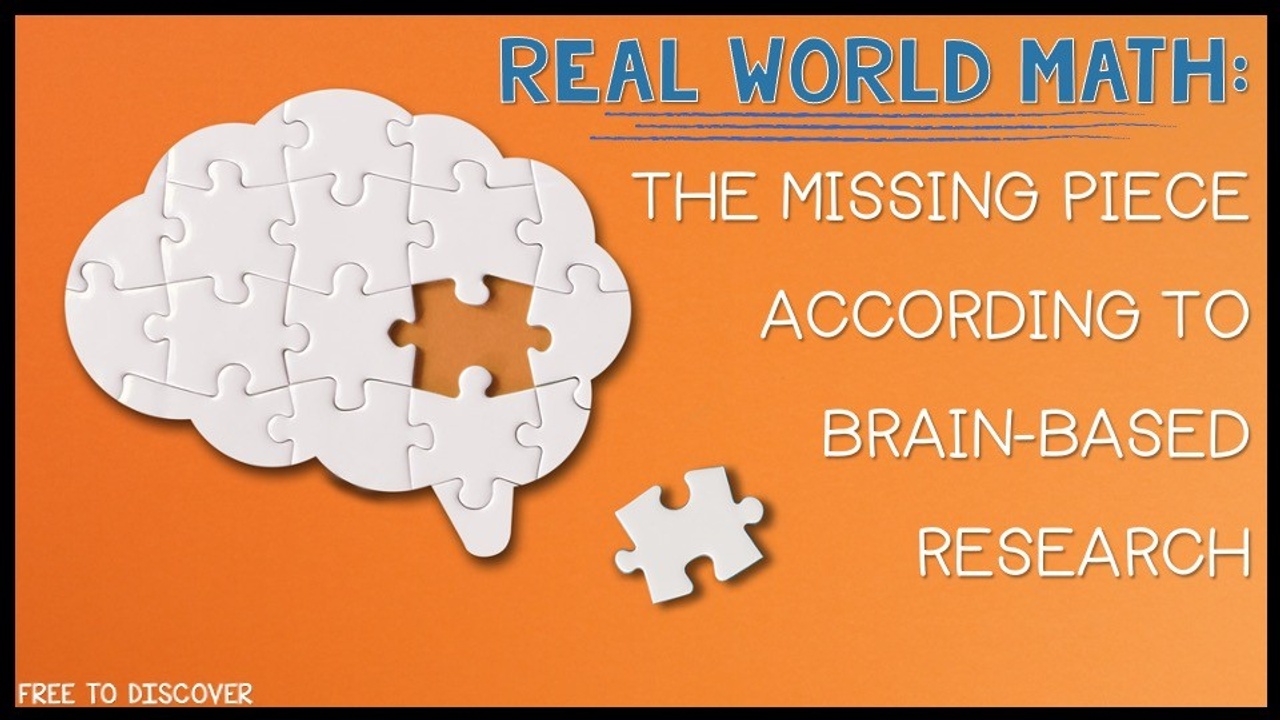
Real World Math: The Missing Piece According to Brain-Based Research
Conceptual understanding and retention of math concepts is a challenge in many secondary math classrooms. Though the problem may be complex, in this post we'll explore the specific connection between real world math and brain-based learning.
What is Brain-Based Research?
Brain-based research, or brain-based learning, refers to using facts scientists have discovered about the brain and about learning to drive lesson planning. According to researchers, "learning is the result of the firing of synapses. The reason that we become more skilled at doing a particular task the more we practice it is that the neurons involved in that particular task actually get 'better' at communicating with each other, or firing, across their synapses" (Ribas et al.). Learning is not magic; it is science. The more we understand about the brain, the better we can create a classroom environment conducive to the needs of our students' brains.
According to Ribas, "Stimuli or information entering the brain is more likely to become part of the brain's long-term memory if that stimuli or information can be connected to knowledge already held in long-term memory" (Ribas et al.). Consider math topics that you teach. When you introduce new examples do you (a) connect the new skills to previously learned math skills and (b) connect the new skills to concepts students understand in their day-to-day life? Learning occurs best when connections are made between ideas, which increases the number of dendrites - or input fibers - leading to an enriched neuron. When a neuron is enriched, synapse firing can happen with less effort and learning new material becomes easier (Ribas et al.).
How Does Real World Math Fit In?
Okay, okay, but what does this have to do with teaching math using real world examples? When we are able to connect new math topics with real world ideas that students really know and understand, they can more easily master new ideas by latching onto knowledge that has been previously committed to longterm memory.
For example:
- Teach students how to interpret line graphs using Snapchat data.
- Introduce scientific notation by exploring the recent in-the-news discoveries of the Webb Telescope.
- Interpret functions by analyzing real data of the top 10 movies of all time.
Because students already have background knowledge on the topics from experience or from learning about them in the media, they will have an easier time connecting the new math ideas - or even review topics - with the popular topics; therefore, more easily committing the ideas to longterm memory.

What is Contextual Learning?
According to Williams, contextual learning describes lessons that connect math concepts to the real world. These lessons show students specific ways that they may use the math skills in a future job or life activity. Williams notes that contextual learning has foundations in brain-based research due to the connections between concepts.
Many researchers have suggested using the acronym REACT when lesson planning for contextual learning.
"Relate - The instructor relates the new concept to a personal experience.
Experience - Students are led through an experience to gain a deeper understanding of the concept.
Application - Students use the concepts in a real-world application.
Communication - Students cooperate (share) or communicate their understanding of a concept.
Transfer - Students transfer the concept to a new situation" (Williams, Desha L.).
The REACT model is an appropriate framework to follow whenever introducing a new skill that can be easily connected (without force) to a real world scenario that is relevant to the lives of middle school and high school math students.
So, let's summarize how this all fits together. Brain-based research teaches us how learning occurs and highlights the importance of connecting concepts together. Real world learning is an underused resource for doing just that. In fact, real world math is the missing piece to student success! Contextual learning gives us a framework for designing our lessons to make this happen in a meaningful way. Want help making this happen? Keep scrolling!
----------------------------------------------------------------------
Today's blog post referenced these helpful materials:
Ribas, William, et al. “The Brain and Learning.” Instructional Practices That Maximize Student Achievement: For Teachers, by Teachers, Ribas Publications, Westwood, MA, 2017.
Williams, Desha L. "The What, Why, and How of Contextual Teaching in a Mathematics Classroom". The Mathematics Teacher 100.8 (2007): 572-575. < https://doi.org/10.5951/MT.100.8.0572>. Web. 23 Aug. 2022.
----------------------------------------------------------------------
Be sure to subscribe to receive Issue 1 of a free monthly newsletter for secondary math students to help you incorporate the ideas in this article right away!
Join the Free to Discover community!
When you subscribe, you'll access Issue 1 of our monthly newsletter for secondary math students!

